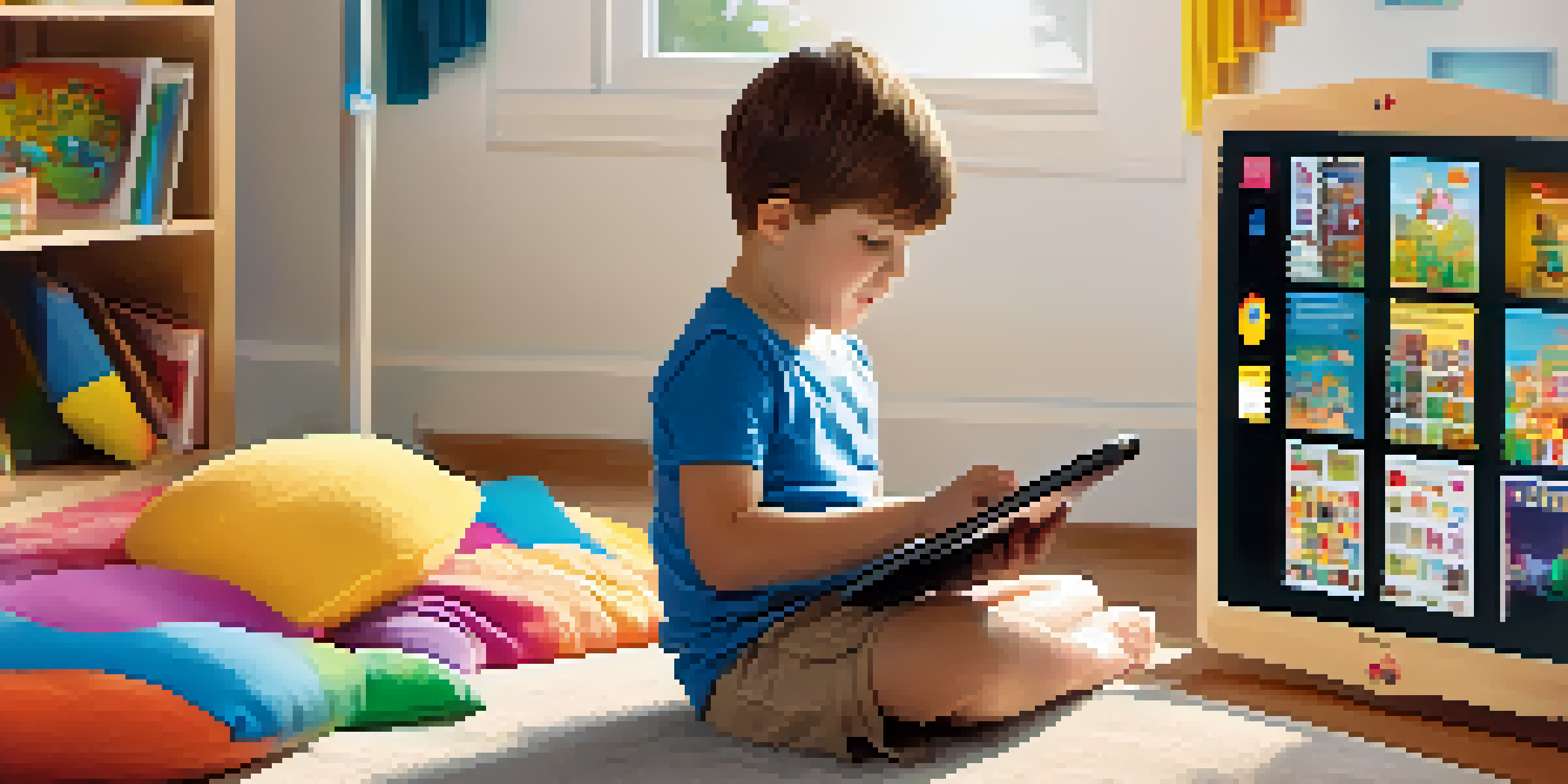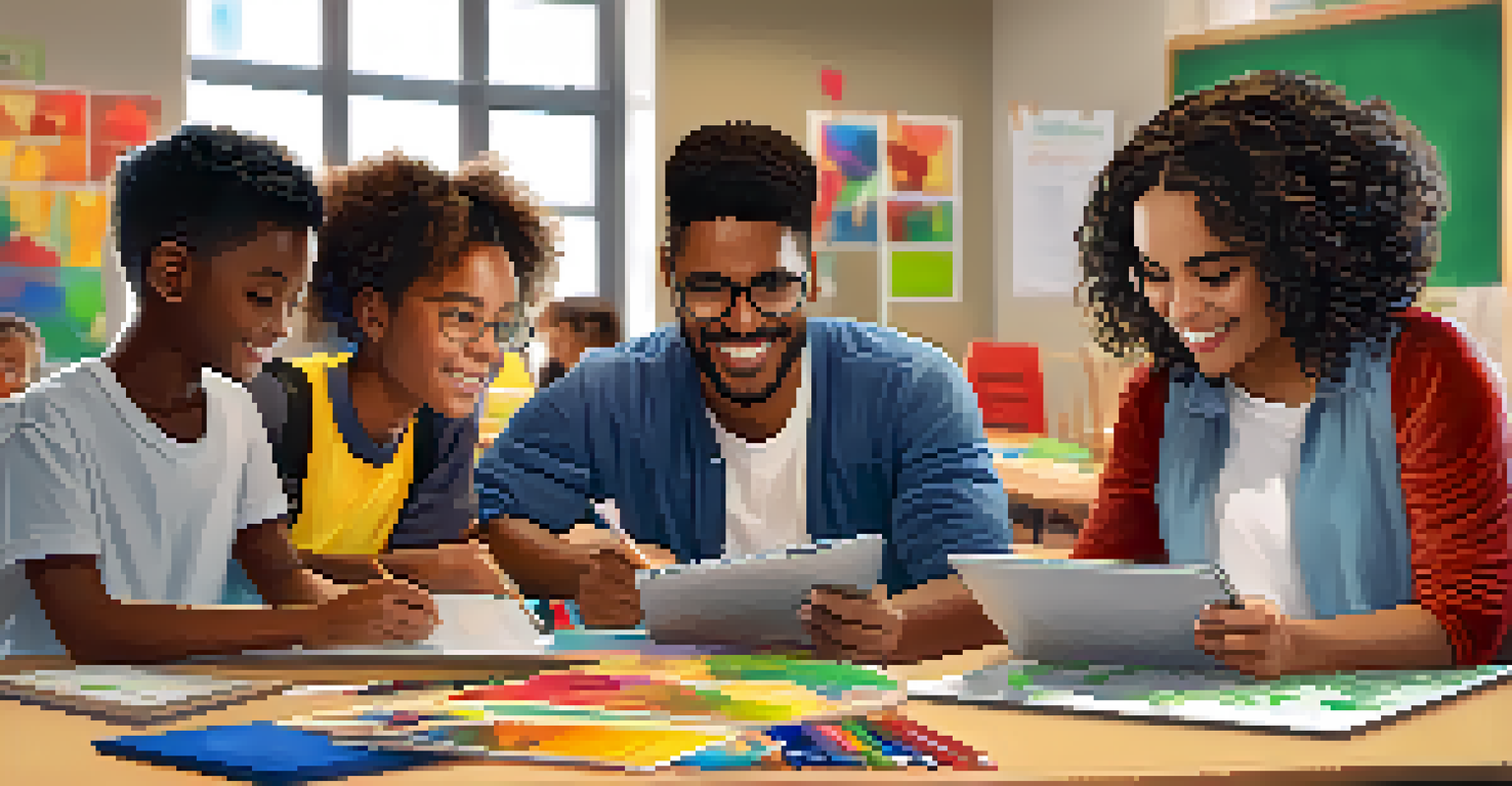Mobile Learning for Special Needs Education: Tailored Approaches

Understanding Mobile Learning in Special Needs Education
Mobile learning refers to the use of mobile devices to facilitate educational experiences. For students with special needs, this form of learning offers unique opportunities to engage with content in a way that suits their specific requirements. By using applications designed for tablets or smartphones, educators can provide tailored educational experiences that are both interactive and accessible.
Technology can be a great equalizer in education, providing resources and opportunities for all students, regardless of their individual challenges.
The flexibility of mobile learning allows students to learn at their own pace, which can be particularly beneficial for those who may struggle with traditional classroom settings. For instance, a child with autism may find it easier to focus on a lesson delivered through an app rather than in a busy classroom environment. This adaptability is crucial in catering to diverse learning needs.
Furthermore, mobile learning can incorporate various multimedia elements, such as videos, animations, and interactive quizzes. These features can help make difficult concepts easier to understand, thus enhancing comprehension and retention. Overall, mobile learning stands as a promising approach for improving educational outcomes in special needs education.
Benefits of Mobile Learning for Special Needs Students
The primary benefit of mobile learning is its inherent flexibility, allowing students to learn in environments that are comfortable for them. This is especially important for students with special needs, as they often require personalized learning experiences that traditional education settings may not provide. For example, a student with dyslexia might benefit from text-to-speech features available on many educational apps.

Additionally, mobile learning encourages independence by allowing students to take control of their learning process. They can access materials whenever they need, which fosters a sense of autonomy and self-directed learning. This empowerment can be incredibly motivating, helping them engage more deeply with their education.
Mobile Learning Enhances Engagement
Mobile learning allows students with special needs to engage with content more interactively and at their own pace.
Another significant advantage is the ability to track progress in real-time. Many mobile learning platforms offer analytics that allow educators and caregivers to monitor a student's development closely. This data-driven approach can lead to timely interventions and adjustments in teaching strategies, ensuring that each child is supported in the best possible way.
Tailoring Learning Experiences with Technology
The key to effective mobile learning for special needs education lies in customization. Various applications can be tailored to meet individual learning styles and needs, ensuring that each student receives the support they require. For instance, visual learners may benefit from apps featuring strong visual aids and graphics, while auditory learners may thrive with audio-based content.
The real power of technology is in the way it can personalize learning and empower each student to reach their potential.
Moreover, adaptive learning technologies can modify the difficulty level of tasks based on a student's performance. This means that if a student struggles with a particular concept, the app can offer simpler alternatives or additional practice to help them master the material. Such personalized pathways can make learning more engaging and less frustrating.
Teachers and parents can also collaborate on selecting the right tools and resources for students, making the process a team effort. By involving all stakeholders, the educational experience becomes more meaningful and effective, ensuring that each child's unique needs are met.
Challenges in Implementing Mobile Learning
While mobile learning offers many advantages, it also presents certain challenges that need to be addressed. One significant hurdle is the digital divide, where not all students have equal access to mobile devices or reliable internet connections. This can create disparities in educational opportunities, particularly for low-income families.
Another challenge is the need for ongoing training for educators and caregivers. To effectively implement mobile learning strategies, teachers must be familiar with the technology and how to integrate it into their lesson plans. This requires time, resources, and professional development that may not always be readily available.
Customization is Key to Success
Tailoring mobile applications to individual learning styles significantly improves educational experiences for special needs students.
Lastly, there is the concern of screen time and its potential impact on students' health and well-being. Striking a balance between traditional learning methods and mobile learning is essential to ensure that students do not become overly reliant on devices, while still benefiting from the opportunities they provide.
Collaborative Learning Through Mobile Platforms
Mobile learning can foster collaboration among students, which is particularly beneficial in special needs education. By utilizing group activities or projects through mobile apps, students can work together in ways that may not be possible in a traditional classroom. For example, they can share ideas, provide feedback, and support one another's learning journeys.
These collaborative opportunities can help build social skills, which are often a focus in special needs education. Through group discussions or joint problem-solving tasks, students can practice communication and teamwork, laying the groundwork for strong interpersonal skills. This not only enriches the learning experience but also helps students feel more connected.
Moreover, mobile platforms can facilitate communication between educators, parents, and students. By creating a shared space for updates and feedback, everyone involved can stay informed about the child's progress and needs, making it easier to address any challenges that arise.
Real-World Examples of Mobile Learning in Action
Numerous success stories highlight the positive impact of mobile learning on special needs education. For instance, a school district that implemented tablet-based learning for students with speech delays reported significant improvements in communication skills. The interactive nature of the apps encouraged students to practice speaking and listening in a fun way.
Another example comes from a special education classroom that used gamification in mobile learning. By turning lessons into games, students were more motivated to participate and engaged with the material. The competitive aspect of earning points and rewards made learning enjoyable and less daunting.
Collaboration Strengthens Learning
Mobile platforms facilitate collaboration among students, enhancing social skills and allowing for a shared learning experience.
These real-world examples demonstrate that when mobile learning is effectively tailored to meet the needs of special education students, it can lead to remarkable educational outcomes. As more success stories emerge, it becomes clear that mobile learning can be a transformative tool in the educational landscape.
The Future of Mobile Learning in Special Needs Education
Looking ahead, the future of mobile learning in special needs education appears promising. As technology continues to evolve, we can expect to see even more innovative solutions designed specifically for diverse learning needs. From augmented reality experiences to artificial intelligence-driven applications, the possibilities are endless.
Incorporating these advancements into educational practices can help create a more inclusive environment for students with special needs. The goal is to ensure that every child has access to the resources they need to succeed, regardless of their individual challenges. As more educators embrace mobile learning, we can anticipate a shift in how special education is perceived and implemented.

Ultimately, the focus should remain on creating tailored experiences that empower students and support their unique learning journeys. By continuing to prioritize innovation and inclusivity, mobile learning can play a vital role in transforming special needs education for the better.